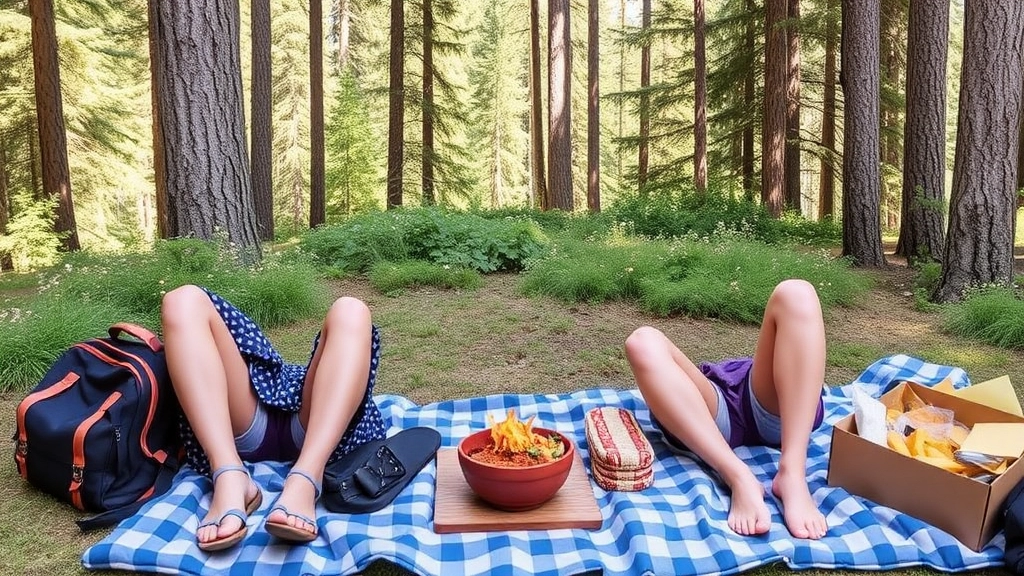Summer Camping: Essential Outfits for Your Adventure
Summer camping is an exhilarating experience, but packing the right outfits can make or break your adventure. From essential clothing items and comfortable footwear to smart layering techniques and must-have accessories, this guide covers everything you need to know for a hassle-free and stylish camping trip. Discover how to choose the right fabrics, pack efficiently, and even opt for eco-friendly gear, ensuring you’re prepared for any activity the great outdoors throws your way.
Practical Tips for Different Camping Activities
Whether you’re hiking rugged trails, lounging by the campfire, or exploring the campsite, this article provides practical tips and outfit ideas tailored for different camping activities. Learn how to stay warm and comfortable at night, protect yourself from the sun, and keep your gear organized. With our expert advice, you’ll be able to enjoy your summer camping trip to the fullest while looking great and feeling even better.
Essential Clothing Items for Summer Camping
Alright, let’s dive into what you really need for summer camping. Ever worried about packing too much or not having the right gear? Trust me, I’ve been there. Let’s break it down so you can focus on enjoying the outdoors.
What Do You Really Need?
First off, let’s talk essentials. What’s the bare minimum you should bring to stay comfortable and prepared?
- Breathable T-shirts: Go for moisture-wicking fabrics. Keeps you cool and dry.
- Lightweight Shorts: Quick-dry materials are a lifesaver.
- Long-sleeve Shirt: Protects you from sunburn and pesky insects.
- Convertible Trousers: Perfect for those unpredictable weather changes.
- Socks: Merino wool is your friend. Keeps your feet dry and blister-free.
Why These Items Matter
Picture this: You’re on a trail, and the weather flips. You need clothing that can handle it all. Here’s why these essentials are game-changers:
- Comfort: The right materials make a huge difference in how you feel.
- Versatility: Convertible clothing adapts to any situation.
- Protection: Long sleeves shield you from the sun and bugs.
Packing Smart
Ever tried packing light and ended up missing something crucial? Here’s how to avoid that:
- Make a List: Jot down everything you need.
- Roll, Don’t Fold: Saves space and reduces wrinkles.
- Prioritise Multi-use Items: Opt for clothes that serve multiple purposes.
Real Talk
Remember that time I forgot my long-sleeve shirt? I ended up with a sunburn and bug bites. Not fun. Learn from my mistakes and pack smart.
For more tips on packing, check out our comprehensive summer camp packing list. And if you’re curious about the different types of summer camp cabins and their features, don’t miss our detailed cabin guide.
Footwear for Comfort and Safety
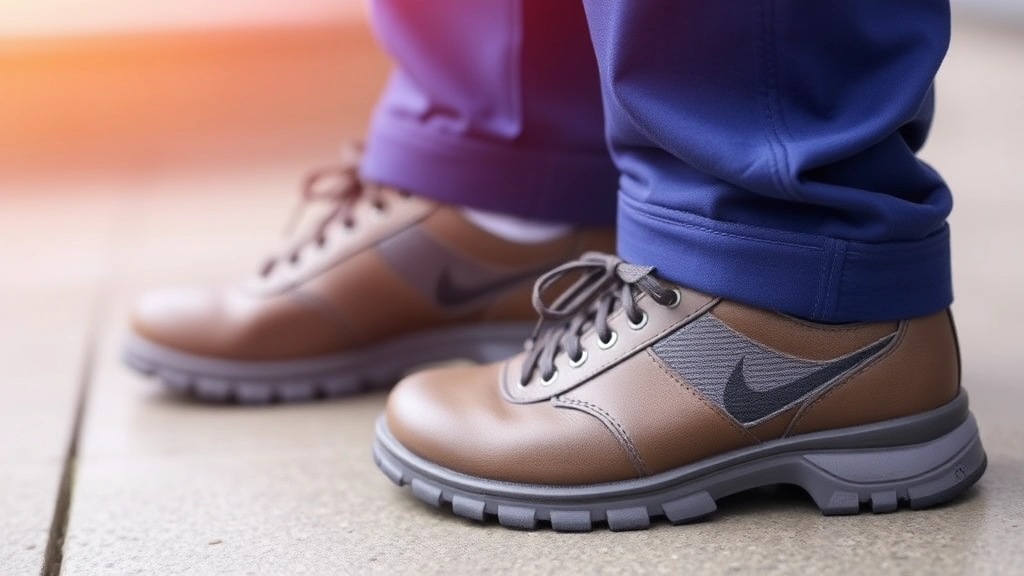
Ever been on a camping trip and ended up with blisters or sore feet? Yeah, not fun.
Choosing the right footwear for comfort and safety is crucial for a successful summer camping adventure.
Why Footwear Matters
Imagine hiking up a trail and your shoes start to rub.
Or worse, you twist an ankle because your boots didn’t provide enough support.
Your feet are your foundation.
Get it wrong, and your whole trip can be a nightmare.
What to Look For
When it comes to camping footwear, there are a few essentials to keep in mind:
- Support: Your shoes need to support your arches and ankles.
- Comfort: Look for cushioned soles and breathable materials.
- Durability: You don’t want your shoes falling apart halfway through the trip.
- Traction: Good grip is essential for slippery or uneven surfaces.
- Water Resistance: Summer can be unpredictable. A quick rain shower shouldn’t ruin your day.
Types of Footwear
Depending on your activities, you’ll need different types of shoes:
- Hiking Boots: Ideal for long treks. They offer ankle support and are usually water-resistant.
- Trail Runners: Lighter than hiking boots, great for shorter hikes and running on trails.
- Sandals: Perfect for lounging around the campsite or short walks. Look for ones with good arch support.
- Water Shoes: If you’re planning on kayaking or swimming, these are a must.
My Personal Picks
I remember one trip where I made the mistake of wearing old trainers.
Big mistake.
By the end of the first day, my feet were killing me.
Now, I swear by my hiking boots.
They’ve got great ankle support and are super comfy.
Packing Tips
- Break Them In: Never take brand-new shoes on a camping trip. Break them in first.
- Bring Extra Socks: Trust me, you’ll thank me later.
- Pack Light: You don’t need to bring every pair you own. Pick versatile options.
Choosing the right footwear for comfort and safety can make or break your camping trip.
Looking for more tips on what to pack? Check out our section on Essential Clothing Items for Summer Camping.
Got any footwear horror stories? Share them in the comments!
Layering Techniques for Variable Weather
Alright, let’s talk about one of the biggest headaches when it comes to summer camping: the weather. It’s all over the place, right? One minute you’re sweating bullets, and the next, you’re shivering. So, how do you deal with that? The answer is layering. Trust me, mastering layering techniques for variable weather can make or break your camping trip.
Why Layering is Crucial
First off, why is layering even a thing? Well, it’s all about flexibility. You want to be able to add or remove clothing as the temperature changes. This keeps you comfortable and helps you avoid that awful feeling of being too hot or too cold. Plus, it makes packing easier because you can mix and match pieces.
The Basics of Layering
Here’s a quick breakdown of the layering system:
- Base Layer: This is your first line of defence. It’s all about moisture-wicking to keep sweat off your skin. Think lightweight, breathable fabrics like merino wool or synthetic blends.
- Mid Layer: This is your insulation layer. It traps heat to keep you warm when the temperature drops. Fleece jackets or down vests are great for this.
- Outer Layer: This is your shield against the elements. A lightweight, waterproof, and windproof jacket will keep you dry and block out the wind.
Practical Tips for Layering
Now, let’s get into some practical tips:
- Start with a Moisture-Wicking Base: A good base layer is essential. It keeps you dry by pulling sweat away from your body. Look for materials like merino wool or polyester.
- Opt for Versatile Mid Layers: You want something that can be easily added or removed. A fleece jacket is a solid choice because it’s warm but not bulky.
- Don’t Skimp on the Outer Layer: This is your protection against rain and wind. A good quality, lightweight jacket is worth the investment.
Real-Life Example
Last summer, I went camping in the Lake District. The weather was all over the placeâsunny in the morning, windy by noon, and rainy in the evening. I started with a moisture-wicking base layer, added a fleece jacket as the day got cooler, and threw on a waterproof jacket when it started to rain. It made a world of difference.
Quick Layering Checklist
- Base Layer: Moisture-wicking top and bottom
- Mid Layer: Fleece jacket or down vest
- Outer Layer: Waterproof and windproof jacket
- Extras: Lightweight gloves and a beanie for unexpected cold snaps
For more great tips on preparing for your summer camping trip, check out our Summer Camp Packing Checklist. And if you’re looking to add some excitement to your trip, don’t miss our guide on Capture the Flag for the ultimate camp fun.
Accessories to Enhance Your Camping Experience
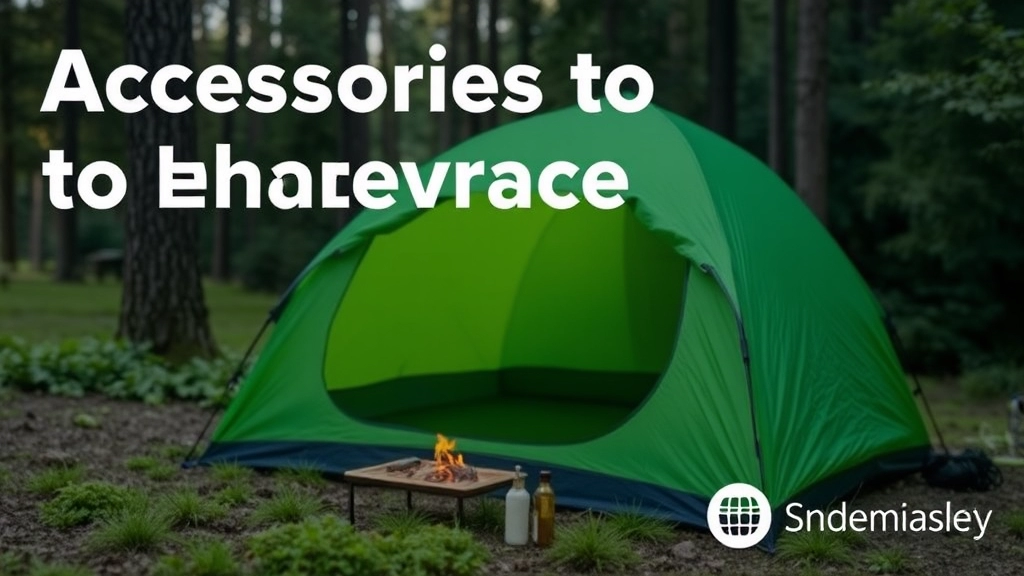
Alright, let’s talk about accessories to enhance your camping experience.
Ever been out in the wild and thought, “Man, I wish I had that one thing?” Yeah, me too.
Let’s dive in and make sure you’re kitted out with all the essentials.
Must-Have Accessories
First up, headlamps.
Why? Because stumbling around in the dark is no fun.
- Hands-free lighting: Perfect for setting up camp or those late-night bathroom trips.
- Energy-efficient: Most headlamps have long battery life, so you’re not left in the dark.
Next, multi-tools.
Think Swiss Army knife but better.
- Versatile: From cutting rope to opening cans, these bad boys do it all.
- Compact: Easy to pack and carry.
Comfort and Convenience
Now, let’s talk about camping chairs.
Sitting on the ground gets old fast.
- Portable: Lightweight and easy to carry.
- Comfortable: Look for ones with good back support.
And don’t forget a portable charger.
You don’t want your phone dying just when you need it.
- Solar-powered: Eco-friendly and reliable.
- High-capacity: Enough juice to keep your devices running.
Staying Organised
Ever lost your keys in the wilderness? It’s a nightmare.
- Dry bags: Keep your stuff dry and organised.
- Carabiners: Clip your gear to your backpack for easy access.
Personal Touches
Now, let’s add some personal flair.
- Bandanas: Versatile and stylish. Use it as a headband, neckerchief, or even a towel.
- Sunglasses: Protect your eyes and look cool doing it.
Quick Tips
- Lightweight: Don’t overpack. Choose accessories that are light and easy to carry.
- Durable: Go for quality. You don’t want your gear falling apart mid-trip.
Real Stories
I remember one trip where I forgot my headlamp.
Had to use my phone’s flashlight, and it drained the battery in no time.
Lesson learned: always pack a headlamp.
Got any must-have accessories I missed? Drop them in the comments!
Ready to level up your camping game? Check out our guide on essential clothing items for summer camping.
Choosing the Right Fabrics for Summer Camping
Alright, let’s get real. When you’re out there in the wild, sweating buckets under the summer sun, the last thing you want is your clothes sticking to you like cling film. So, how do you choose the right fabrics for summer camping? Let’s dive in.
Why Fabric Choice Matters
First off, why should you even care about fabric? Simple. The right fabric can make or break your camping experience. It can keep you cool, wick away sweat, and even protect you from those annoying insects. On the flip side, the wrong fabric can turn your trip into a sticky, uncomfortable mess.
Key Fabrics to Consider
- Cotton: Ah, the classic. Cotton is breathable and soft, making it a popular choice. But be warned, it absorbs moisture like a sponge. So, if you’re planning on some intense hiking, maybe think twice.
- Merino Wool: Yeah, I know what you’re thinkingâwool in summer? Trust me, merino wool is a game-changer. It’s breathable, moisture-wicking, and even has natural odour resistance. Perfect for those long hikes.
- Synthetic Fabrics: Think polyester or nylon. These fabrics are lightweight, quick-drying, and great for wicking away sweat. Ideal for those high-energy activities.
- Bamboo: This one’s for the eco-warriors out there. Bamboo fabric is sustainable, breathable, and has natural anti-bacterial properties. Plus, it’s super soft.
Choosing Fabrics Based on Activities
Different activities call for different fabrics. Here’s a quick rundown:
- Hiking: Go for synthetic blends or merino wool. You need something that can handle sweat and dry quickly.
- Relaxing at the Campsite: Cotton or bamboo fabrics work well here. Comfort is key when you’re just chilling out.
- Water Activities: Quick-drying synthetics are your best bet. No one likes sitting around in soggy clothes.
Layering with the Right Fabrics
Layering isn’t just for winter. Even in summer, temperatures can drop at night. Here’s how to layer up:
- Base Layer: Go for moisture-wicking fabrics like merino wool or synthetics.
- Mid Layer: A lightweight fleece or wool blend works well.
- Outer Layer: A breathable, water-resistant jacket is ideal.
Real Stories, Real Tips
I remember this one trip where I thought cotton was the way to go. Big mistake. Halfway through the hike, I was drenched in sweat, and my shirt felt like a wet rag. That’s when I switched to merino wool, and it was a game-changer. No more swampy feeling, and I stayed cool throughout the hike.
Quick Tips for Choosing the Right Fabrics
- Check the Weather: Always know what you’re up against. Hot and humid? Go for breathable, moisture-wicking fabrics.
- Think About Activities: Match your fabric choice to what you’ll be doing. High-energy activities need quick-drying, sweat-wicking materials.
- Pack Smart: Bring a mix of fabrics to cover all bases. You never know when the weather might change.
For more tips on making your camping experience enjoyable, check out our Ultimate Guide to Summer Camp Bonfire Fun and learn how to capture those moments with our guide on Capturing Stunning Summer Camping Photos.
Stylish Yet Functional Outfits for Daytime Activities
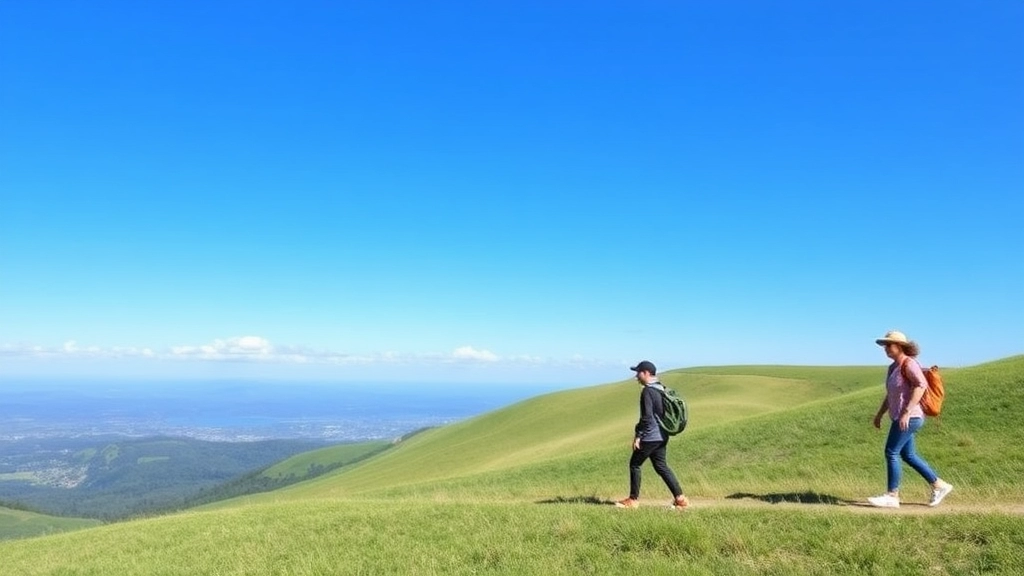
Alright, let’s get real. You’re heading out for a summer camping trip, and you want to look good without sacrificing comfort or practicality. How do you nail that balance?
First off, here’s what you’re probably worried about:
- Will I be too hot or too cold?
- Can I move freely in my outfit?
- Is it going to stand up to the elements?
- Will I still look decent for those Instagram shots?
Here’s how you can tackle these worries head-on:
1. Breathable Tops
You want something that lets your skin breathe but also protects you from the sun.
- Lightweight T-shirts: Go for moisture-wicking fabrics like polyester or merino wool.
- Tank Tops: Great for super-hot days, but remember to slap on some sunscreen.
2. Versatile Bottoms
Comfort is key, but so is functionality.
- Convertible Trousers: These are a game-changer. Zip off the legs when it gets too hot.
- Shorts: Opt for those with pockets. You’ll thank me later.
3. Footwear
You’re walking a lot, so make sure your feet are happy.
- Hiking Boots: Essential for rough terrain.
- Sandals: Perfect for lounging around the campsite.
4. Sun Protection
Don’t overlook this. Sunburn can ruin your trip.
- Wide-Brimmed Hats: Keeps the sun off your face.
- Sunglasses: Protect those peepers.
5. Layers
Weather can be unpredictable. Be ready.
- Light Jacket: A windbreaker or a light fleece can be a lifesaver.
- Long-Sleeve Shirts: Good for both warmth and sun protection.
Quick Story:
Last summer, I went camping in the Lake District. I thought I had everything sorted. But guess what? I forgot my hat and ended up with a sunburnt nose. Not fun. So, trust me, these tips aren’t just fluff. They’re from experience.
To sum it up:
Stylish yet functional outfits for daytime activities aren’t just about looking good. They’re about feeling good and being prepared.
- Breathable tops to keep you cool.
- Versatile bottoms for all kinds of activities.
- Proper footwear for comfort and safety.
- Sun protection to keep you safe.
- Layers for unpredictable weather.
Nighttime Camping Attire for Warmth and Comfort
Ever been out camping, only to find yourself shivering once the sun goes down? Nighttime camping can be a real challenge if you’re not dressed right. So, how do you keep warm and comfy when the temperature drops? Let’s break it down.
Why Nighttime Camping Attire Matters
First off, let’s tackle the main concern: warmth. When the sun sets, temperatures can plummet, especially in the wilderness. The last thing you want is to be cold, uncomfortable, and unable to sleep. Proper nighttime attire not only ensures a good night’s sleep but also keeps you safe from hypothermia and other cold-related issues.
Key Components of Nighttime Camping Attire
- Base Layers: Your Foundation for Warmth
- Thermal Underwear: Opt for moisture-wicking materials like merino wool or synthetic fabrics. They keep you dry and warm.
- Long-Sleeve Shirts and Leggings: These add an extra layer of insulation.
- Mid Layers: Insulation is Key
- Fleece Jackets or Pullovers: Fleece is lightweight yet incredibly warm. Perfect for trapping heat.
- Down Vests or Jackets: These are great for colder nights, offering superior warmth without adding much bulk.
- Outer Layers: Shield Against the Elements
- Waterproof and Windproof Jackets: Even if it’s not raining, these jackets block wind, which can make a big difference in how warm you feel.
- Insulated Pants: These can be layered over your base layers for added warmth.
- Accessories: Small but Mighty
- Wool Socks: Cold feet can ruin your night. Wool socks are a must.
- Beanies and Gloves: Heat escapes from your head and hands, so keep them covered.
- Neck Gaiters or Scarves: These can be pulled up over your face for extra warmth.
Layering Techniques for Optimal Warmth
Layering isn’t just a buzzword; it’s a game-changer. Here’s how to do it right:
- Start with a Moisture-Wicking Base Layer: This keeps sweat away from your skin.
- Add an Insulating Mid Layer: Think fleece or down.
- Top it off with a Protective Outer Layer: Waterproof and wind-resistant jackets are ideal.
Real-Life Example: My Cold Night in the Forest
I remember one camping trip where I underestimated the nighttime chill. I had only packed a light hoodie and some thin joggers. Big mistake. I ended up layering on every piece of clothing I had, and still, I was shivering. Since then, I’ve always made sure to pack proper nighttime attire. Trust me, it’s worth the extra weight in your backpack.
Packing Tips for Nighttime Comfort
- Roll, Don’t Fold: Rolling your clothes saves space and keeps them wrinkle-free.
- Use Compression Bags: These can significantly reduce the bulk of your clothing.
- Pack Extra Layers: Always bring more than you think you’ll need. Better safe than sorry.
Eco-Friendly and Sustainable Options
If you’re environmentally conscious, consider sustainable materials like organic cotton or recycled polyester. Brands are increasingly offering eco-friendly camping gear that doesn’t compromise on performance.
For more tips on packing and staying comfortable, check out our Ultimate Packing Guide. And if you’re looking for fun activities to do during your camping trip, our Top Summer Camp Games and Activities Guide has you covered!
Packing Tips for a Hassle-Free Camping Trip
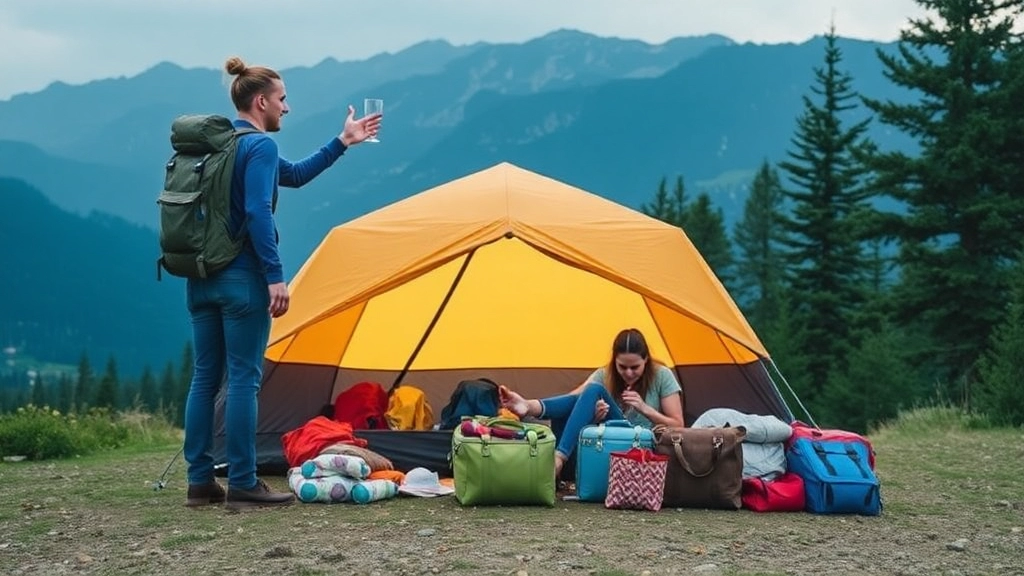
Ever been stressed out about packing for a camping trip?
I get it.
You want to make sure you have everything, but you don’t want to overpack.
Here’s the deal.
Packing for a camping trip doesn’t have to be complicated.
Let’s break it down.
Start with a Checklist
First things first, make a list.
Essentials:
- Tent
- Sleeping bag
- Cooking gear
- First aid kit
Clothing:
- Layered outfits (think: t-shirts, hoodies, and a waterproof jacket)
- Comfortable footwear
- Extra socks and underwear
Extras:
- Flashlight
- Multi-tool
- Insect repellent
Pack Smart
Now, how do you fit all this without turning into a pack mule?
Use Packing Cubes
These are lifesavers.
Sort your stuff into categories:
- One cube for clothes
- Another for toiletries
- One more for gadgets and chargers
Roll, Don’t Fold
Rolling your clothes saves space and keeps them wrinkle-free.
Heavy Stuff at the Bottom
Put the heaviest items at the bottom of your backpack.
This keeps the weight balanced and makes it easier to carry.
Keep Essentials Accessible
You don’t want to dig through your bag for a flashlight in the middle of the night.
Keep essentials like:
- Snacks
- Map
- First aid kit
Right at the top.
Minimise Toiletries
You don’t need your entire bathroom cabinet.
Stick to the basics:
- Toothbrush
- Travel-sized toothpaste
- Biodegradable soap
Food Packing Tips
Food can be tricky.
But it doesn’t have to be.
Pre-Plan Your Meals
Know exactly what you’ll eat each day.
Use Ziplock Bags
They save space and keep your food fresh.
Bring Non-Perishable Items
Think:
- Canned beans
- Instant noodles
- Trail mix
Eco-Friendly Options
Want to be kind to the planet?
Choose Reusable Containers
Ditch the single-use plastics.
Pack Biodegradable Products
From soap to utensils, go green.
Real Talk
I once forgot my sleeping bag on a trip.
Worst. Night. Ever.
Don’t be that person.
Double-check your list before you leave.
Happy camping!
Eco-Friendly and Sustainable Camping Gear
Ever wondered how you can enjoy the great outdoors without leaving a massive carbon footprint? Eco-friendly and sustainable camping gear is the answer. It’s not just a trend; it’s a necessity. Let’s dive into how you can gear up responsibly and still have an epic camping experience.
Why Go Eco-Friendly?
First off, why should you even care about eco-friendly camping gear? Well, here are a few reasons that might hit home:
- Protect Nature: The whole point of camping is to enjoy nature, right? So why trash it?
- Healthier for You: Eco-friendly gear often means fewer chemicals and toxins.
- Long-Term Savings: Sustainable gear tends to last longer, saving you money in the long run.
Key Eco-Friendly Camping Gear
Alright, let’s get specific. What kind of gear should you be looking at? Here’s a rundown:
- Tents: Look for tents made from recycled materials. Brands like Big Agnes and Marmot offer eco-friendly options.
- Sleeping Bags: Opt for sleeping bags filled with recycled down or synthetic materials. They’re warm, comfy, and kind to the planet.
- Cookware: Go for stainless steel or cast iron. They’re durable and can be used over and over again.
- Water Bottles: Ditch the plastic. Go for stainless steel or BPA-free reusable bottles.
- Solar Chargers: Keep your gadgets powered up without draining the planet’s resources.
Practical Tips for Sustainable Camping
Now, how do you put all this into practice? Here are some actionable tips:
- Pack Light: Less weight means less fuel consumption if you’re driving.
- Leave No Trace: Always pack out what you pack in. Simple.
- Use Biodegradable Soap: Keep those streams and lakes clean.
- Recycle: Bring along a small bin for recyclables.
- Buy Second-Hand: Gear swaps and second-hand stores are gold mines for sustainable camping gear.
Real Talk: My Experience
I remember one camping trip where we decided to go fully eco-friendly. We used solar chargers for our gadgets, cooked on a portable stove with biodegradable fuel, and even had compostable cutlery. It felt great knowing our adventure wasn’t harming the environment. Plus, the gear was surprisingly durable and efficient.
Internal Links
For more tips on packing light, check out our Ultimate Packing Guide. And if you’re curious about what to wear, our guide on Stylish Summer Camp Dress Tips has got you covered.
Outfit Ideas for Different Camping Activities
Ever wondered what to wear for different camping activities?
Let’s dive into it.
Hiking Gear
Hiking can be a beast.
You need the right outfit to tackle those trails.
Essentials:
- Breathable T-shirt: Keeps you cool and dry.
- Convertible trousers: Switch from long pants to shorts in a snap.
- Lightweight jacket: Weather can turn on a dime.
Fishing Attire
Fishing is all about patience.
But you don’t need to be patient with your outfit.
Top picks:
- Quick-dry shirt: Avoid soggy situations.
- Cargo shorts: Pockets for all your gear.
- Wide-brim hat: Sun protection is key.
Campfire Evenings
Nothing beats a night by the campfire.
But what should you wear?
Must-haves:
- Comfy hoodie: Warm and cosy.
- Joggers: Stretchy and comfortable.
- Wool socks: Toasty toes are happy toes.
Water Activities
Planning to hit the water?
Here’s what you need.
Gear up:
- Swimwear: Obvious, but essential.
- Rash guard: Protects against sun and scrapes.
- Water shoes: No slipping on wet rocks.
Exploring the Campsite
A bit of casual exploring?
Keep it simple.
Outfit ideas:
- Graphic tee: Show off your style.
- Denim shorts: Durable and trendy.
- Trainers: Comfort for short walks.
Wildlife Watching
Spotting wildlife is thrilling.
But you need to blend in.
Blend in:
- Camouflage shirt: Stay unnoticed.
- Neutral trousers: Avoid bright colours.
- Binocular harness: Hands-free viewing.
Yoga and Relaxation
Camping isn’t all action.
Relax with some yoga.
Relaxation wear:
- Yoga pants: Flexible and comfy.
- Tank top: Keeps you cool.
- Light blanket: Perfect for savasana.
Ready to pack?
Check out our Summer Camp Packing List to get started.
Happy camping! Also, don’t miss our Summer Camp Weekly Themes for endless fun ideas!
FAQs About Summer Camping Outfits
What type of footwear is best for summer camping?
Choosing the right footwear for comfort and safety is crucial. Options include hiking boots for long treks, trail runners for shorter hikes, sandals for lounging around the campsite, and water shoes for activities like kayaking or swimming.
Why is it important to break in new shoes before a camping trip?
Breaking in new shoes before a camping trip is essential to avoid blisters and discomfort. Always wear them for a few days prior to your trip to ensure they fit well and are comfortable.
What clothing should I pack for daytime activities during a summer camping trip?
For daytime activities, pack breathable tops like lightweight t-shirts or tank tops, versatile bottoms such as convertible trousers or shorts, and proper footwear. Don’t forget sun protection items like wide-brimmed hats and sunglasses, and layers for unpredictable weather.
What are some must-have accessories for camping?
Must-have accessories include headlamps for hands-free lighting, multi-tools for versatility, camping chairs for comfort, and portable chargers to keep your devices running. Additionally, dry bags and carabiners help keep your gear organized and accessible.
How can I pack efficiently for a camping trip?
Start with a checklist of essentials, use packing cubes to organize items, roll your clothes to save space, and place heavy items at the bottom of your backpack. Keep essentials like snacks and a first aid kit easily accessible.
What should I consider when choosing camping outfits?
When choosing camping outfits, consider comfort, functionality, and weather conditions. Opt for breathable fabrics, versatile clothing items, and proper footwear. Layering is also important to adapt to changing weather conditions.
Why is sun protection important during camping?
Sun protection is crucial to prevent sunburn and long-term skin damage. Use wide-brimmed hats, sunglasses, and sunscreen to protect yourself from harmful UV rays.
What are some tips for packing food for a camping trip?
Pre-plan your meals, use Ziplock bags to save space and keep food fresh, and bring non-perishable items like canned beans, instant noodles, and trail mix. Consider eco-friendly options like reusable containers and biodegradable products.
How can I ensure my camping gear is durable?
Choose high-quality, durable gear that can withstand the elements and frequent use. Look for items with good reviews and made from robust materials. It’s better to invest in durable gear that lasts longer and performs well.
What are some personal touches I can add to my camping gear?
Add personal touches like bandanas, which are versatile and stylish, and sunglasses to protect your eyes. These items can enhance your camping experience and add a bit of flair to your outfit.
References
-
Expert Advice on Hiking Boots from REI
-
Best Camping Headlamps Reviewed by OutdoorGearLab
-
How to Pack Your Backpack Like a Pro by Backpacker

